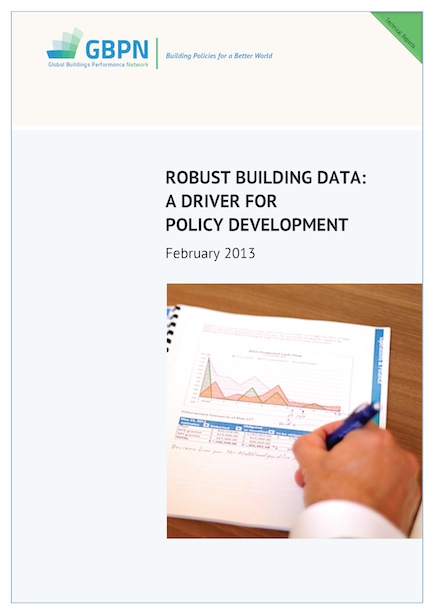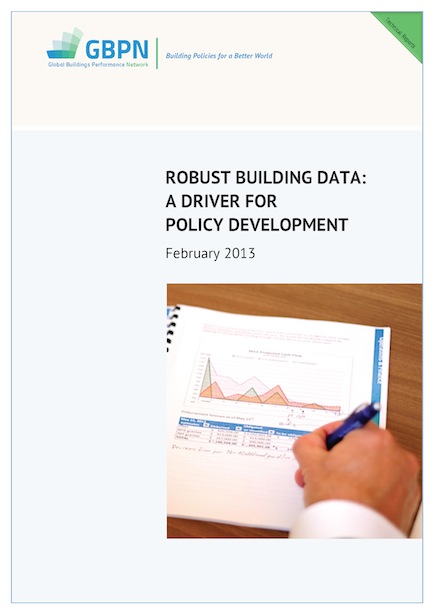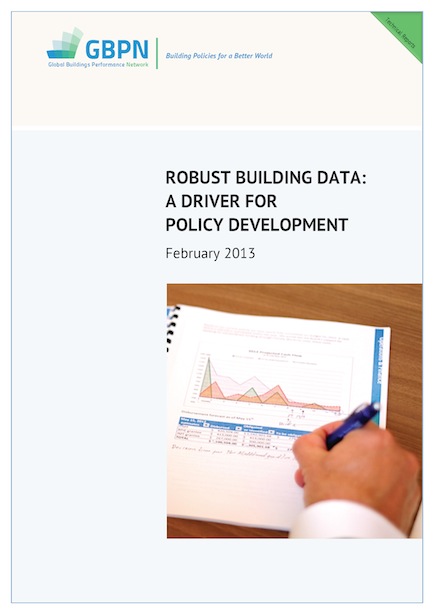印度建筑的减排潜力
 可靠证据表明,至2050年印度建筑领域会产生巨幅能源增长,基于此估测,本报告分析了印度目前建筑节能减排的政策框架及其节能潜力。
可靠证据表明,至2050年印度建筑领域会产生巨幅能源增长,基于此估测,本报告分析了印度目前建筑节能减排的政策框架及其节能潜力。
53 result(s) found
 可靠证据表明,至2050年印度建筑领域会产生巨幅能源增长,基于此估测,本报告分析了印度目前建筑节能减排的政策框架及其节能潜力。
可靠证据表明,至2050年印度建筑领域会产生巨幅能源增长,基于此估测,本报告分析了印度目前建筑节能减排的政策框架及其节能潜力。
 本报告就四个地区数据质量和数据的可利用性问题进行了分析,同时也提醒了我们需要完成多少工作才能建成一个强大而全面的建筑数据库,并提出了实现这个数据库的可行性建议。
本报告就四个地区数据质量和数据的可利用性问题进行了分析,同时也提醒了我们需要完成多少工作才能建成一个强大而全面的建筑数据库,并提出了实现这个数据库的可行性建议。
 本报告就四个地区数据质量和数据的可利用性问题进行了分析,同时也提醒了我们需要完成多少工作才能建成一个强大而全面的建筑数据库,并提出了实现这个数据库的可行性建议。
本报告就四个地区数据质量和数据的可利用性问题进行了分析,同时也提醒了我们需要完成多少工作才能建成一个强大而全面的建筑数据库,并提出了实现这个数据库的可行性建议。
 Data Annex
Data Annex
Discover where things stand regarding building energy data quality and availability in our four regions, this report reminds us of how far we have to go before a robust and comprehensive set of building data is in place and provides some recommendations of how we can get there.
 The Economist Intelligence Unit (EIU) report "Achieving scale in energy-efficient buildings in India: A view from the construction and real estate sectors" commissioned by the GBPN explains the challenges and opportunities of investing in energy efficiency in buildings in India.
The Economist Intelligence Unit (EIU) report "Achieving scale in energy-efficient buildings in India: A view from the construction and real estate sectors" commissioned by the GBPN explains the challenges and opportunities of investing in energy efficiency in buildings in India.
 A report from the Economist Intelligence Unit (EIU), commissioned by the GBPN finds that while India’s commercial building sector has blazed the energy-effiency trail in the building sector, achieving significant scale will depend on efficiency measures becoming standard practice in the commercial middle market, retrofit and, particularly, the residential building segment.
A report from the Economist Intelligence Unit (EIU), commissioned by the GBPN finds that while India’s commercial building sector has blazed the energy-effiency trail in the building sector, achieving significant scale will depend on efficiency measures becoming standard practice in the commercial middle market, retrofit and, particularly, the residential building segment.
 Executive Summary
Executive Summary
GBPN conducted a study on the factors affecting the use of ESCO models for the retrofit of existing buildings in China, identifying current barriers to the development of the Chinese ESCO market, while also researching best-practice examples of ESCOs globally and investigating the feasibility of introducing those examples to China.
Building energy efficiency is an important strategy for reducing greenhouse gas emissions globally. In fact, 55 countries have included building energy efficiency in their Nationally Determined Contributions (NDCs) under the Paris Agreement. This research uses building energy code implementation in six cities across different continents as case studies to assess what it may take for countries to implement the ambitions of their energy efficiency goals.
This report presents the outcomes of a pilot study exploring how the building and planning system is delivering a sustainable built environment in Australia. It identifies four key issues emerging from the research highlighting both the challenges and opportunities in implementing ESD in the built environment in the Victorian context. These are: 1) the gap between the planning and building system; 2) weaknesses in the planning system; 3) governance, inconsistencies, and coordination; and 4) improving the system – networks and advocacy.
Buildings are the focus of European (EU) policies aimed at a sustainable and competitive low-carbon economy by 2020. Reducing energy consumption of existing buildings and achieving nearly zero energy buildings (NZEBs) are the core of the Energy Efficiency Directive (EED) and the recast of the Energy Performance of Building Directive (EPBD). To comply with these requirements, Member States have to adopt actions to exploit energy savings from the building sector.
There is now widespread recognition in the international community that the commitments made by national governments under the Paris Climate Agreement in 2015 cannot be achieved without concerted action by cities. Fortunately, many mayors have shown strong commitment to tackling climate change and a willingness to collaborate to achieve this goal.
It is clear that city must be part of the solution if an urbanizing world is to grapple successfully with ecological challenges such as energy depletion and climate change. A system dynamics model was developed in this study using STELLA platform to model the energy consumption and CO2 emission trends for the City of Beijing over 2005–2030. Results show that the total energy demand in Beijing is predicted to reach 114.30 million tonnes coal equivalent (Mtce) by 2030, while that value in 2005 is 55.99 Mtce, which is 1.04 times higher than the level in 2005.
The review of policies being implemented in China, the EU, India and the US presented in this report has also identified some key challenges that we must address if we are going to realize the mitigation potential of the building sector. Chief among these is the need to improve our monitoring of the impact that our policies are having. Lack of measured and verifiable data on the influence of policies on building energy performance currently hampers our ability to assess and continuously improve their effectiveness.
In this work, the literature about the relationship between thermal comfort and productivity in workplaces is reviewed and explored by means of a co-citation analysis—i.e., a factor analysis applied to the mutual citations of the most relevant contributions. A structure of three main clusters of papers describing the relationships between workers’ thermal comfort and productivity were identified according to the factor analysis and then confirmed with a multidimensional scaling.
This article provides useful information that could help you address some barriers to sustainable initiatives: Every executive that you speak to is aware that data can be manipulated and may be skeptical of studies conducted by organizations that could benefit from a particular set of results. So I've included information on independent third-party studies. In challenging economic times, people are particularly concerned about short-term cash flow.
The paper answers three research questions: (1) Which policies prevail in Germany and Norway to foster the deployment of energy efficient and decarbonized solutions for residential buildings? (2) How do these policies respond to country-specific barriers to the energy transition in the building sector, and (3) What effects do they have on the actual implementation of technological and societal solutions?
Globally, building energy regulation has been an effective policy instrument for reducing energy use and carbon emissions. In Australia, the majority of regions address building performance through the National Construction Code. However, in 2004 the New South Wales government introduced a planning instrument called the ‘Building Sustainability Index’, known as BASIX. Until now there has been limited investigation of this sustainability index approach compared with addressing issues individually through building standards.